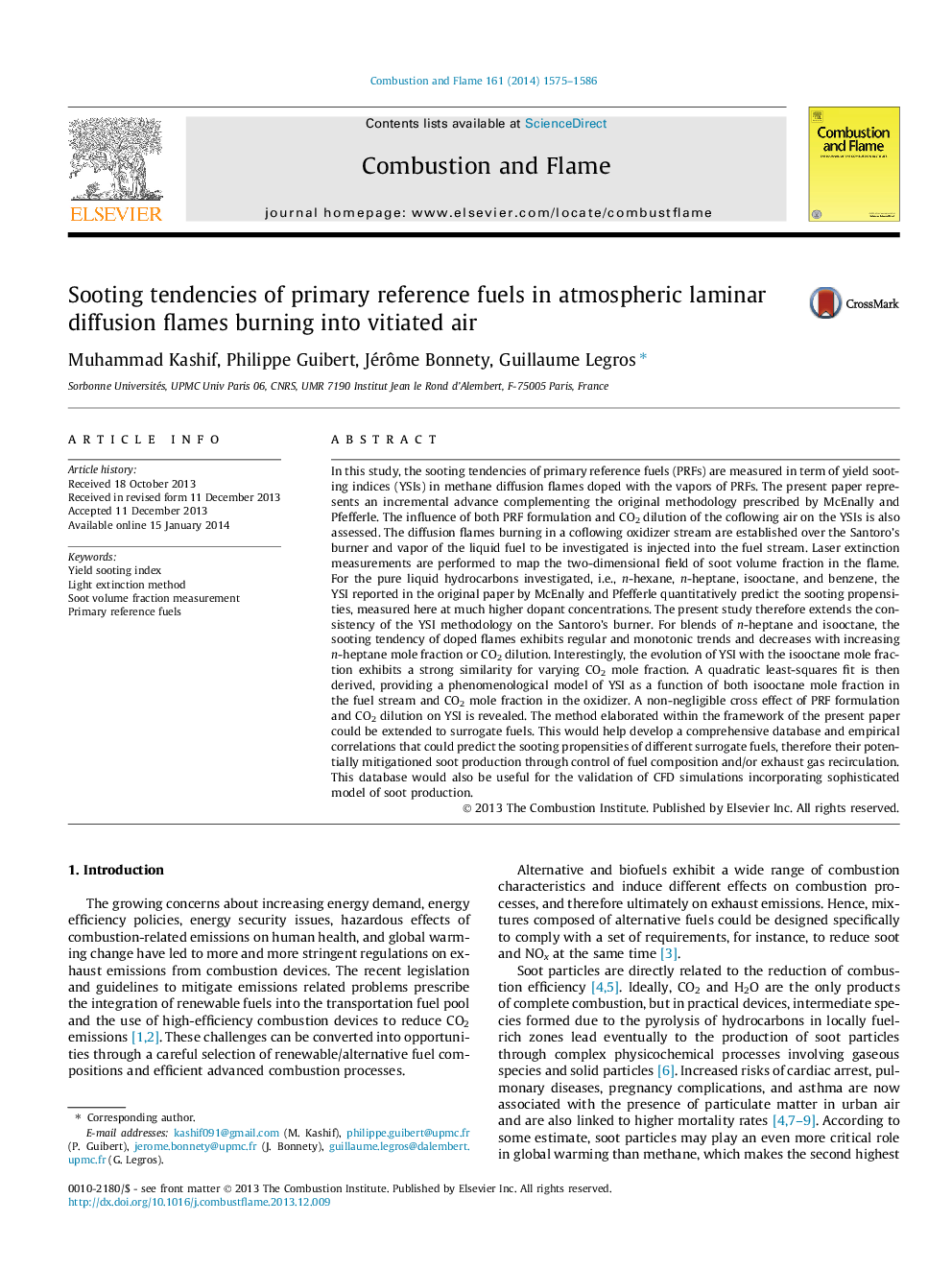| Article ID | Journal | Published Year | Pages | File Type |
|---|---|---|---|---|
| 10264657 | Combustion and Flame | 2014 | 12 Pages |
Abstract
In this study, the sooting tendencies of primary reference fuels (PRFs) are measured in term of yield sooting indices (YSIs) in methane diffusion flames doped with the vapors of PRFs. The present paper represents an incremental advance complementing the original methodology prescribed by McEnally and Pfefferle. The influence of both PRF formulation and CO2 dilution of the coflowing air on the YSIs is also assessed. The diffusion flames burning in a coflowing oxidizer stream are established over the Santoro's burner and vapor of the liquid fuel to be investigated is injected into the fuel stream. Laser extinction measurements are performed to map the two-dimensional field of soot volume fraction in the flame. For the pure liquid hydrocarbons investigated, i.e., n-hexane, n-heptane, isooctane, and benzene, the YSI reported in the original paper by McEnally and Pfefferle quantitatively predict the sooting propensities, measured here at much higher dopant concentrations. The present study therefore extends the consistency of the YSI methodology on the Santoro's burner. For blends of n-heptane and isooctane, the sooting tendency of doped flames exhibits regular and monotonic trends and decreases with increasing n-heptane mole fraction or CO2 dilution. Interestingly, the evolution of YSI with the isooctane mole fraction exhibits a strong similarity for varying CO2 mole fraction. A quadratic least-squares fit is then derived, providing a phenomenological model of YSI as a function of both isooctane mole fraction in the fuel stream and CO2 mole fraction in the oxidizer. A non-negligible cross effect of PRF formulation and CO2 dilution on YSI is revealed. The method elaborated within the framework of the present paper could be extended to surrogate fuels. This would help develop a comprehensive database and empirical correlations that could predict the sooting propensities of different surrogate fuels, therefore their potentially mitigationed soot production through control of fuel composition and/or exhaust gas recirculation. This database would also be useful for the validation of CFD simulations incorporating sophisticated model of soot production.
Keywords
Related Topics
Physical Sciences and Engineering
Chemical Engineering
Chemical Engineering (General)
Authors
Muhammad Kashif, Philippe Guibert, Jérôme Bonnety, Guillaume Legros,
